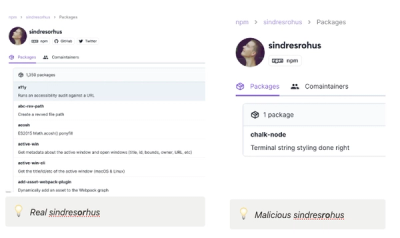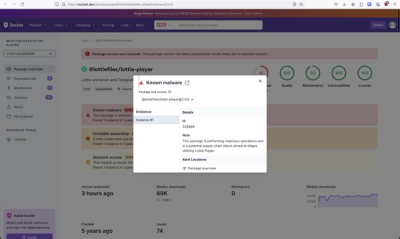What is velocityjs?
Velocity.js is a fast, feature-rich animation engine for JavaScript. It allows you to animate HTML elements with a variety of effects, providing a more performant alternative to jQuery's $.animate() method. Velocity.js is designed to work seamlessly with jQuery but can also be used as a standalone library.
What are velocityjs's main functionalities?
Basic Animations
This feature allows you to animate basic CSS properties like opacity and position. The code sample animates an element's opacity to 0.5 and moves it to 50% from the left over a duration of 1000 milliseconds.
document.getElementById('element').velocity({ opacity: 0.5, left: '50%' }, { duration: 1000 });
Color Animations
Velocity.js supports color animations, allowing you to animate CSS color properties. The code sample changes the background color of an element to red over a duration of 1000 milliseconds.
document.getElementById('element').velocity({ backgroundColor: '#ff0000' }, { duration: 1000 });
Scroll Animations
This feature allows you to animate scrolling to a specific element. The code sample scrolls the page to the element with an offset of -50 pixels over a duration of 1000 milliseconds.
document.getElementById('element').velocity('scroll', { duration: 1000, offset: -50 });
Easing
Velocity.js provides various easing functions to control the animation's acceleration and deceleration. The code sample animates an element's opacity to 1 using a 'spring' easing function over a duration of 1000 milliseconds.
document.getElementById('element').velocity({ opacity: 1 }, { duration: 1000, easing: 'spring' });
Chaining Animations
You can chain multiple animations together in sequence. The code sample first animates an element's opacity to 0.5 and then moves it to 50% from the left, each over a duration of 1000 milliseconds.
document.getElementById('element').velocity({ opacity: 0.5 }, { duration: 1000 }).velocity({ left: '50%' }, { duration: 1000 });
Other packages similar to velocityjs
animejs
Anime.js is a lightweight JavaScript animation library with a simple, yet powerful API. It supports a wide range of animations, including CSS properties, SVG, DOM attributes, and JavaScript objects. Compared to Velocity.js, Anime.js offers more advanced animation capabilities and a more modern API.
gsap
GSAP (GreenSock Animation Platform) is a robust JavaScript library for creating high-performance animations. It is widely used in the industry for its flexibility and power, supporting complex animations and timelines. GSAP is more feature-rich and versatile compared to Velocity.js, making it suitable for more complex animation needs.
popmotion
Popmotion is a functional, flexible JavaScript animation library. It provides a range of tools for creating animations and interactions, including physics-based animations. Popmotion is more modular and functional compared to Velocity.js, offering a different approach to building animations.
Velocity - Template Engine




Velocityjs is velocity template engine for javascript.
中文版文档
##Features
- Supports both client and server side use.
- Separation of parsing and rendering templates.
- The basic syntax is fully supported all java version velocity.
- Vim Syntax for vim.
##Install
via npm:
$ npm install velocityjs
##Broswer
Compatible all modern broswer, You can try test case on your browser to test it.
For other lower version broswer, you need have those polyfill function.
- Array.prototype map, forEach, some, filter, every, indexOf
- Date.now
- Object.keys
##Examples
You can find a lot of examples from the tests directory. There is no different between the use of browser and NodeJs.
##Public API
{
// render method
render(vm: string, context?: Object, macros?: Object): string;
parse(vm: string, config?: Object, ignorespace?: boolean): Array<Ast>;
Compile: {
(asts: Array<Ast>, config?: Object): {
render(context?: Object, macros?: Object);
};
};
}
render
params:
- vm {string} velocity string input
- context {object} render context, data or function for vm
- macros {object} such as
#include('path/xxx') , you can define you inlcude macro function
var Velocity = require('velocityjs');
Velocity.render('string of velocity', context, macros);
####context
context is an object or undefined, for vm $foo.bar, data look up path will be context.foo.bar.
context can have method, and call it just on velocity string.
The method of context, will have eval method on this of inner method body. You can eval to rerender velocity string, such as test code $control.setTemplate.
Compile and parse
parse method can parse vm, and return ast tree of velocity.
Compile will render asts to result string.
var Compile = Velocity.Compile;
var asts = Velocity.parse('string of velocity');
(new Compile(asts)).render(context, macros);
Compile
params:
- asts {array} array of vm asts tree
- config {object} you can define some option for Compile
config
- escape {boolean} default
true, default escape variable to html encode, you can set false to close it. - unescape {object} define the object, which key do not need escape. For example, set unescape equal
{control: true}, so $control.html will not escape.
parse
params:
- vm {string} string to parse
- blocks {object} self define blocks, such as
#cms(1) hello #end, you can set {cms: true} - ignorespace {boolean} if set true, then ignore the newline trim.
##Syntax
Syntax you can find from velocity user guide。
###Directives
Directives supports have set, foreach, if|else|elseif, macro, break, stop.
Some othe directive evaluate, define, parse, do not supported default, but You can realize by context or macros, for example parse
##Questions
You can find help from those ways:
- New issue
- Email to eward.song at gmail.com
- 阿里内部员工,可以通过 hanwen.sah 搜到我的旺旺
Other
Recommend an other velocity.
##License
(The MIT License)







